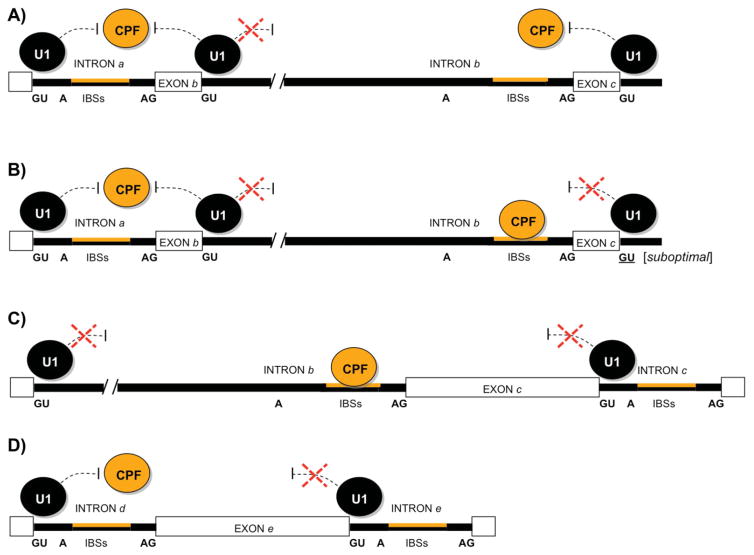Figure 5.
Under the U1-dependent definition, the U1 snRNP binding to 5′ splice sites guides splicing and influences splicing mode. A: Constitutive splicing of both introns a and b is promoted. Splicing of the short intron a is favored by optimal splice sites and by the (distance-dependent) inhibitory effect of the U1 snRNP on the physical binding and/or downstream functions of cleavage/polyadenylation factors (CPFs). If intron size is large (intron b), the inhibitory effect of the U1 snRNP on CPFs targeting the downstream intron binding sites (IBSs) may be reduced (indicated by red dashed cross) but splicing is still favored by the effect of the U1snRNP binding the 5′ splice site of the intron downstream from exon c. In B and C, splicing of intron b is disfavored due to: B: the large size of intron b and/or the suboptimal binding of U1snRNP to the downstream 5′ splice site; C: the simultaneous large size of intron b and the large size of the downstream exon c. In either case, the likelihood of skipping exon c increases. D: The splicing of intron d is promoted due to its short size, despite the large size of exon e.

